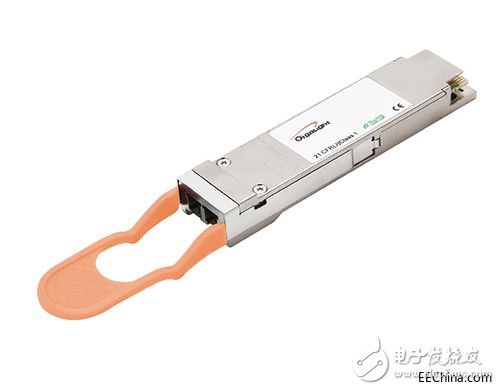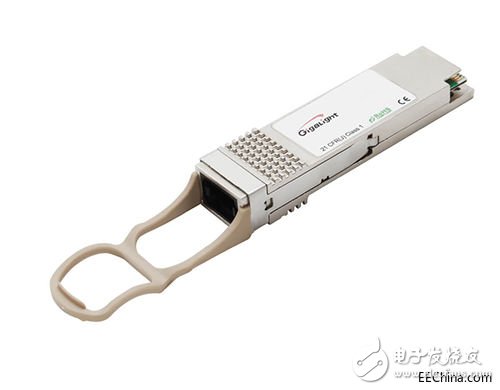With the rapid development of the optical communication industry and the increase in user demand, early low-rate optical modules have slowly failed to meet the transmission needs of users. Under such circumstances, the 100G optical module market has become the focus of the market. In the past few years, 100G optical modules have become the dominant players in the market with high speed and high price. What kind of optical module is this? How about the 100G QSFP28SR4 optical module? good or not?

The 100G optical module is an optical module product that is born to adapt to the trend of 10G gradually moving to 40G and 100G in the network market. The transmission rate is 100G, which plays a vital role in building a 100G network system.
Second, the technical development of 100G optical modulesCompared with 2.5G, 10G or 40G WDM transmission systems, 100G optical transmission uses digital coherent receivers to map all optical properties of optical signals to the electrical domain through phase diversity and polarization diversity, using mature digital signal processing techniques in electricity. The domain implements polarization demultiplexing, channel impairment equalization compensation, timing recovery, carrier phase estimation, symbol estimation, and linear decoding. While implementing 100G optical transmission, 100G optical modules have undergone a series of major technological changes, including polarization multiplexed phase modulation technology and digital coherent reception technology, the third generation of super error correction coding technology, thus satisfying users and time. The demand for advancement.
Third, the classification of 100G optical modulesThe types of 100G optical modules currently available on the market include: CXP optical modules, CFP optical modules, CFP2 optical modules, CFP4 optical modules, and QSFP28 optical modules.
Four: 100G QSFP28 SR4 optical module worksThe 100GQSFP28SR4 optical module is mainly composed of the first clock data recovery module, array drive module, laser emission module, photoelectric conversion module and electrical signal processing module. Let's briefly analyze its working principle.
1. First, the data recovery module will perform data recovery processing on the input 100G electrical signal, and then input the processed electrical signal to the array driving module;
2. The array driving module then performs modulation and demodulation processing on the received electrical signal, and then transmits the signal to the laser emitting module;
3. In this part of the laser emitting module, the electrical signal is converted into an optical signal and then coupled into the optical fiber;
4. The coupled optical signal is transmitted to the photoelectric conversion module, and then converted into an electrical signal again, and output to the electrical signal processing module;
5. The final electrical signal processing module is used to sequentially convert the electrical signals into current conversion voltages, and then output them to the main control terminal.
Four: 100G QSFP28 SR4 optical module features

Since most of the data centers use multimode fiber, IEEE has developed a standard for 100G QSFP28 optical modules that supports multimode fiber short-distance transmission applications: 100GBASE-SR4. Its characteristics are as follows:
·4-channel full-duplex transceiver module
· Transmission rate up to 26Gbps per channel
· Supports both 40GE and 56GE FDR rates
· 4-channel 850nm VCSEL array
·4-channel PIN photodetector array
· Built-in and transmitter built-in CDR circuit
· Support CDR bypass
·Low power consumption "2.5W
·QSFP hot plug package
· The maximum transmission distance of OM3 multimode fiber (MMF) is 70m, and 100m for OM4 MMF
· Fiber interface accepts a single MPO
· Built-in digital diagnostics
·Working temperature 0 °C ~ 70 °C
·3.3 v power supply voltage
· Meet RoHS 6 (lead-free)
With the development of technology, 100G network applications are becoming more and more common, and 100G optical modules have become more cost-effective.
SIP Sockets & Adapters
Antenk high quality, dependable Single In-line Package (SIP) Sockets, Adapters, and Headers are designed with robust screw-machined terminals for superior performance.
SIP Sockets and Adapters Overview
SIP Sockets and Adapters from Antenk are easily customized with a variety of insulator options, including Peel-A-Way Removable Terminal Carriers, molded Solid Strips, and molded Snap Strips that are breakable at .100/(2.54mm) increments to ensure you always have the right size strip on-hand. All models feature our screw-machined terminals with multi-finger contacts for proven reliability and performance.
Replace hand loading operations, define a board-to-board stack height, or provide an easy method to plug and unplug components or boards. Contact us to design the exact SIP socket, SIP adapter, SIP header, or single row connector you need.
Automated assembly compliant.
Tapered entry for ease of insertion.
Wide range of patterns and terminal styles, from 2 to 100 positions.
Solder Preform terminals available for mixed SMT and thru-hole process applications.
Closed bottom sleeve for 100% anti-wicking of solder.
Optional Tape Seal on terminals protects contacts from contamination during board processing.
RoHS compliant insulators and terminals are compatible with lead-free processing - select either Matte Tin or Gold plating.
MACHINED FEMALE HEADER
ShenZhen Antenk Electronics Co,Ltd , https://www.antenkconn.com